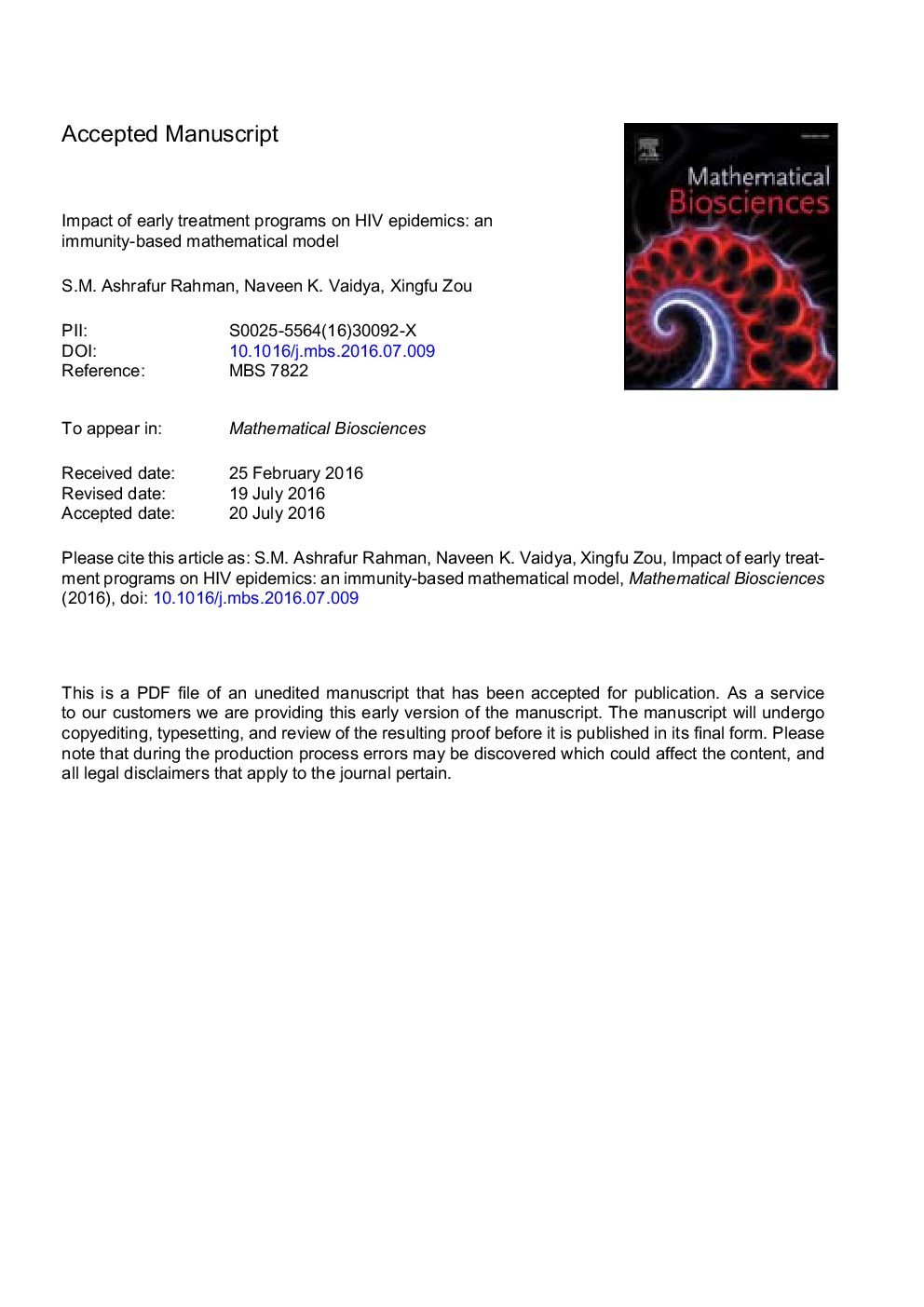| Article ID | Journal | Published Year | Pages | File Type |
|---|---|---|---|---|
| 6371803 | Mathematical Biosciences | 2016 | 25 Pages |
Abstract
While studies on pre-exposure prophylaxis (PrEP) and post-exposure prophylaxis (PEP) have demonstrated substantial advantages in controlling HIV transmission, the overall benefits of the programs with early initiation of antiretroviral therapy (ART) have not been fully understood and are still on debate. Here, we develop an immunity-based (CD4+ T cell count based) mathematical model to study the impacts of early treatment programs on HIV epidemics and the overall community-level immunity. The model is parametrized using the HIV prevalence data from South Africa and fully analyzed for stability of equilibria and infection persistence criteria. Using our model, we evaluate the effects of early treatment on the new infection transmission, disease death, basic reproduction number, HIV prevalence, and the community-level immunity. Our model predicts that the programs with early treatments significantly reduce the new infection transmission and increase the community-level immunity, but the treatments alone may not be enough to eliminate HIV epidemics. These findings, including the community-level immunity, might provide helpful information for proper implementation of HIV treatment programs.
Related Topics
Life Sciences
Agricultural and Biological Sciences
Agricultural and Biological Sciences (General)
Authors
S.M. Ashrafur Rahman, Naveen K. Vaidya, Xingfu Zou,
